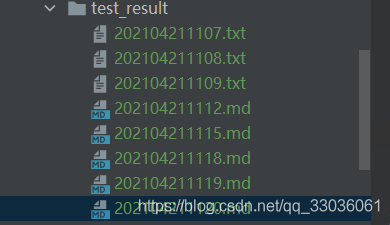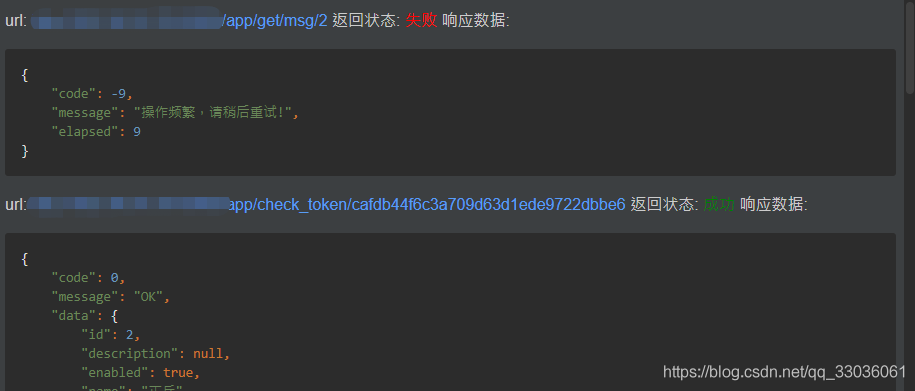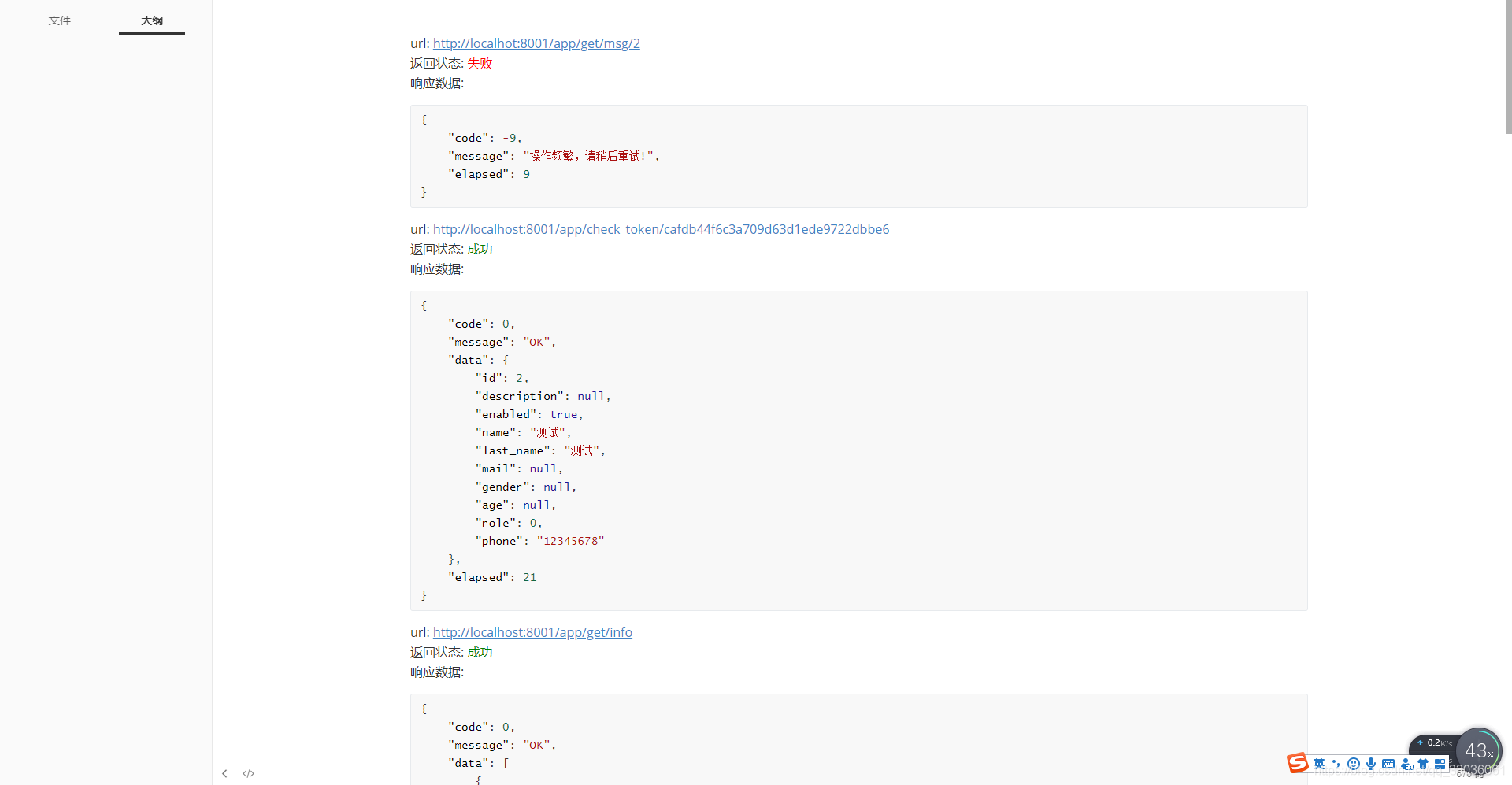您好,登录后才能下订单哦!
密码登录
登录注册
点击 登录注册 即表示同意《亿速云用户服务条款》
本篇文章给大家分享的是有关使用django怎么编写一个单元测试功能,小编觉得挺实用的,因此分享给大家学习,希望大家阅读完这篇文章后可以有所收获,话不多说,跟着小编一起来看看吧。
假设你执行成功的返回的json格式如下:
{
"code": 0,
"message": "OK",
"data": {
"first": false,
"token": "3eeeb5bdad75cbe442fd9c6df5373550"
},
"elapsed": 96
} 我写了一个公共的测试方法test(),def test(method, url, body_data=None, query_string=None, rest_query_string=None): pass, 传uri 、请求方式、参数(query_string,body或者rest都支持)即可,如下代码可在tests.py文件里执行。
from django.test import TestCase
# Create your tests here.
# coding:utf-8
from django.test import TestCase, Client
import os
import requests
import json
user = "1234567"
host = "http://localhost:8006/app"
false = False
true = True
null = None
token = None
POST = "POST"
GET = "GET"
DELETE = "DELETE"
PUT = "PUT"
headers = {'content-Type': 'application/json', 'Accept': '*/*'}
login_data = json.dumps({"phone": user,
"pwd": "e10adc3949ba59abbe56e057f20f883e",
"login_type": 0,
"identifier": "",
"role": 0})
login = requests.post(host + "/login", data=login_data, headers=headers)
login_content = eval(login.content.decode("utf-8"))
if login_content["code"] == 0:
print("login 成功")
token = login_content["data"]["token"]
print("token:" + token)
else:
print("login fail")
if not token:
raise Exception("登录异常")
headers["user-token"] = token
def test(method, url, body_data=None, query_string=None, rest_query_string=None):
if query_string:
url = host + url + (str(rest_query_string) if rest_query_string is not None else "") + "?" + query_string
else:
url = host + url + (str(rest_query_string) if rest_query_string is not None else "")
if method in [POST, DELETE, PUT] and body_data:
body_data = json.dumps(body_data)
response_data = requests.request(method, url, data=body_data, headers=headers)
response_data = response_data.content.decode("utf-8")
if response_data.find("\"code\": 0") != -1:
print(url + " 成功!")
else:
print(url + " 失败!" + response_data)
test(GET, "/check_token/", rest_query_string=token)
test(GET, "/get/child")我们只需要一键执行tests.py文件就能看到效果,如下:

优化test方法, 添加样式,md文件支持读取样式。
def test(method, url, body_data=None, query_string=None, rest_query_string=None):
if query_string:
url = host + url + (str(rest_query_string) if rest_query_string is not None else "") + "?" + query_string
else:
url = host + url + (str(rest_query_string) if rest_query_string is not None else "")
if method in [POST, DELETE, PUT] and body_data:
body_data = json.dumps(body_data)
response_data = requests.request(method, url, data=body_data, headers=headers)
response_data = response_data.content.decode("utf-8")
status = "<font color='red'>失败</font>"
if response_data.find("\"code\": 0") != -1:
status = "<font color='green'>成功</font>"
print(url + " 成功!")
else:
print(url + " 失败!")
response_data = "```json\n" + response_data + "\n```"
print("url: " + url + "\n返回状态: " + status + "\n响应数据:\n" + response_data, file=file)

用md编辑器打开,查看结果也是非常的直观:

以上就是使用django怎么编写一个单元测试功能,小编相信有部分知识点可能是我们日常工作会见到或用到的。希望你能通过这篇文章学到更多知识。更多详情敬请关注亿速云行业资讯频道。
免责声明:本站发布的内容(图片、视频和文字)以原创、转载和分享为主,文章观点不代表本网站立场,如果涉及侵权请联系站长邮箱:is@yisu.com进行举报,并提供相关证据,一经查实,将立刻删除涉嫌侵权内容。